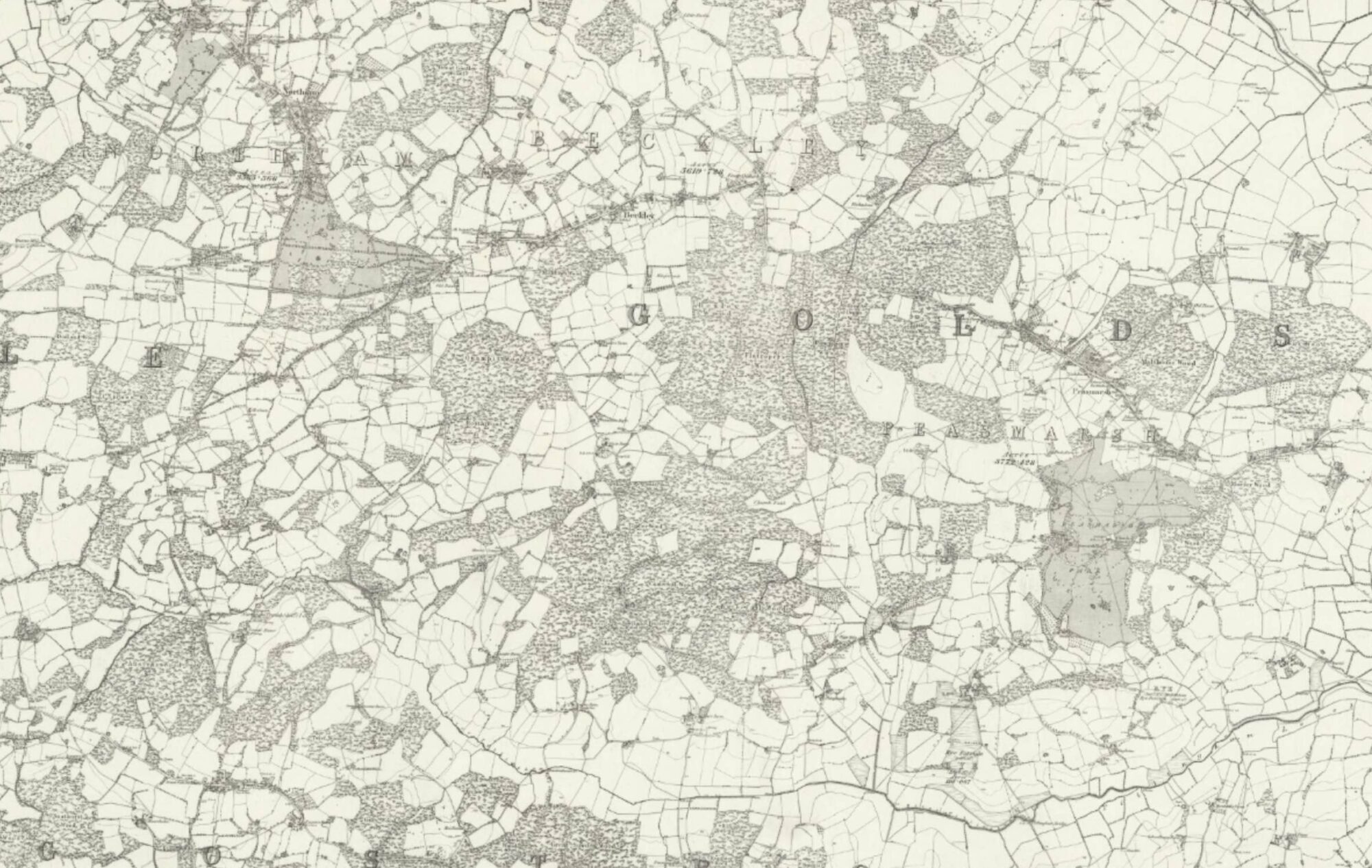Boscombe Down, Wiltshire, in those days was not an RAF station. It was controlled by the Ministry of Supply. Its title was the “Aeroplane and Armament Experimental Establishment”, the A &AEE. It was contracted to A2E2, which when you come to look closely at it, should really be A(1+E2). The Defence field in Government was vast compared with the turn of the Century: there was the Admiralty, the War Office and the Air Ministry, each with their own Ministers, plus the Ministry of Supply supervising procurement for all three military Ministries. Hence most work achieved at Boscombe Down was reported directly to the Ministry of Supply, but with liaison links established to end-users such as Bomber Command. Within the Supply organisation, there was close co-ordination with the sister establishments at Farnborough (Royal Aircraft Establishment) and Defford (Telecommunications Research Establishment, later to drop the T and assume an R for Royal).
Flt Lt Jack, Mrs Pat and Master Peter Furner moved into a pleasant house called “Meadowcroft” on Countess Road, Amesbury, a mile or so from the airfield—our 7th home. There were Married Quarters on the station, but none available. The house was a “hiring” rather than a straight rental, which meant that the RAF had taken over the rental from its owner (who happened to be a Group Captain Alan Theed, overseas) and then charged me at the same rate as a Married Quarter; a most sensible and satisfying arrangement. It was fully furnished; it had a nice large garden backing on to open fields to the west, in which—despite the heavy work load which was going to come my way—I grew most of our vegetables and installed six hens for eggs; and we enjoyed very nice neighbours, one of whom was a retired Flt Lt Pretty who was working at Boscombe in a civilian capacity. Peter was two and a half when we arrived; later, when he reached four, Pat walked him down Countess Road every morning to attend a small private school called Avondale.
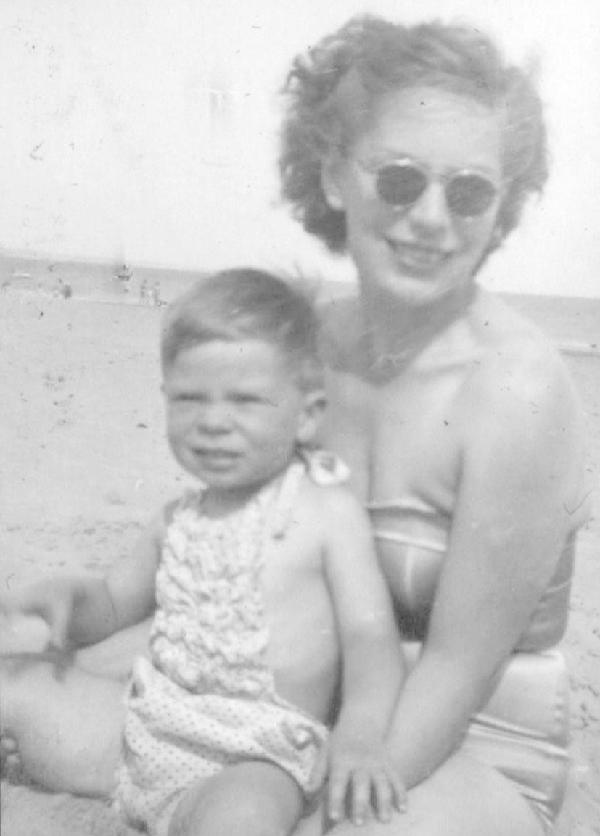
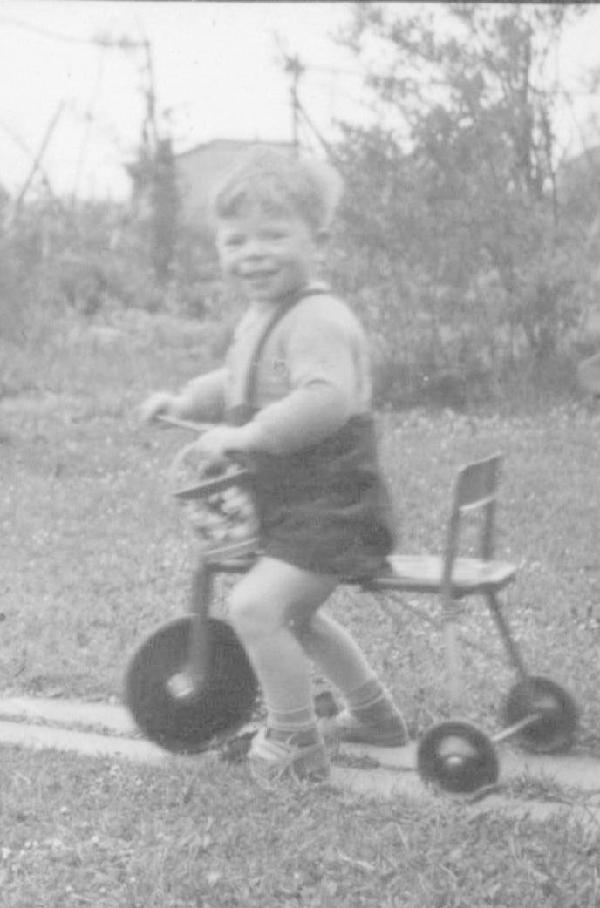
One other domestic event soon after arrival at Boscombe was that I decided we had to have a car; it was a very small and cramped (and cold) Singer 9 with a let-down fabric top. I remember it was about 10 years old and I paid £250 for it (say £4000 in today’s terms). I discovered too late that its previous owner, a departing colleague, had concealed a crack in the block, which was not good news. The £250 incidentally was just about all we had in the bank. Still, once we had got settled, we were able to dispense with our wind-up gramophone and purchase our first radiogram setup which could be loosely described as “Hi-Fi”; and soon—wonder of wonders—along came the first LP (33 rpm) and EP (45) records. I vividly recall the very first HMV 10” LP we bought: it was Kubelik’s version of Ravel’s orchestration of Mussorgsky’s Pictures at an Exhibition.
But we must get to work. The best way to summarise what I was doing at Boscombe Down from May 1951 to November 1953 is this: it was the most intriguing, the most complete, the most exciting task that a flyer (in this case a navigator) could imagine in peacetime. Consider: one was tasked to carry out certain trials; one designed all parameters of the trial, what was necessary in the aircraft as recording equipment, and what flights were necessary to achieve a statistically meaningful result; one flew the programme of flights; one carried out on the ground the analysis of the flight results; one wrote reports on what the results showed; and finally, one briefed the powers that be on those reports. That was it—trials of something new, aircraft, equipment or technique, from start to finish—a most satisfying task.
There were many such trials during my time at Boscombe. Initially I was placed as a Flt Lt in one of two Flights established in the Experimental Navigation Division. Each flight was commanded by a Sqdn Ldr—the two on my arrival being Sqdn Ldr Denis Mackarness and Sqdn Ldr Tom Haxby. The Division was the responsibility of Wg Cdr Paul Wood who was a pilot graduate of the Spec N Course and a very enthusiastic and understanding boss. Others in the Division were Flt Lt David Buchanan (who had suffered with me at Middleton St George), Flt Lt Danny Honley (who finished up in Air Rank and for a time ran the SBAC), Flt Lt Bob Seymour (who ruined a career as a brilliant navigator by falsifying school bills); and, most memorable of all, Mr George Preiss, an ex-Pole, a very clever civil servant who kept a watchful Supply Ministry eye on all our doings and was always extremely helpful in advising on our problems.
There was another matter, involving work of a different kind, which exercised my mind in the early months at Boscombe Down. I had been a Flt Lt for nearly eight years and, now that my Permanent Commission was assured, it was time to prepare for a promotion examination to Sqdn Ldr. Promotion to that rank could not possibly be automatic. There was only a 40% probability of promotion from Flt Lt to Sqdn Ldr in the General Duties Branch: it was the first and all-important hurdle. Subsequent promotions would be only slightly more favourable—about 50% probability to each successive rank all the way up. You can easily calculate that the prospect of climbing from Flt Lt to the first Air Rank (Air Commodore) was a very distant one in twenty chance. But it was just that first hurdle that exercised me in 1951. Wet towels in the evenings, day after day, revising Airmanship, Law, Administration, Technical and so on; then the sitting of the examination, just like the “A” Level days long ago before the war; distinguished pass; promotion on 1st January 1952, age 30; good, not bad at all in the general scheme of things, 29 being regarded as the earliest age to substantive Sqdn Ldr in the peacetime RAF. Tom Haxby was moved (somewhere—I can’t remember where) and I took his place. Thus it was that Mackarness and Furner were working directly for Paul Wood, and we all got on with each other extremely well.
Now let me get back to the task. From my logbook I am reminded that, in my time at Boscombe Down, I flew on 187 occasions, with 27 different pilots—some Navy, some civilian, most RAF, and in 15 different types of aircraft: prominent among the aircraft were the Lincoln, the York, the American B29, the Wayfarer, the North Star DC4 and, most memorably, the Canberra (which I’ll discuss in more detail below), the AVRO Ashton (Britain’s first 4-engined jet) and the Princess (a most beautiful 10-engined flying boat which like Howard Hughes’ “Spruce Goose” never saw service). The Ashton was run by CATS—the Civil Air Test Squadron—with a team of pilots under retired Gp Capt Purvis; it was supplied to the Ministry of Supply as a test bed for a number of trials of equipments and techniques.
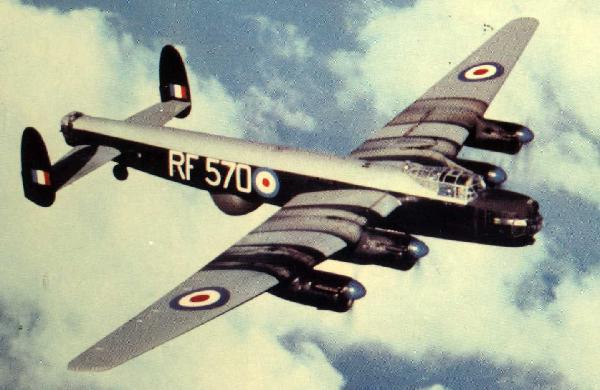
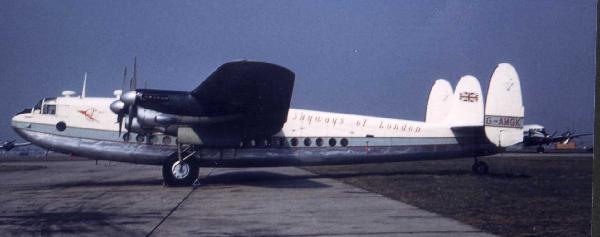
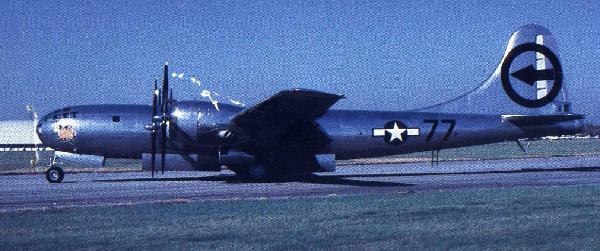
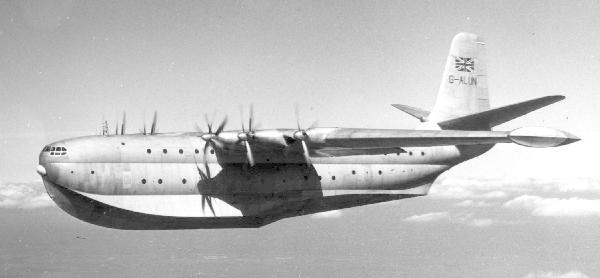
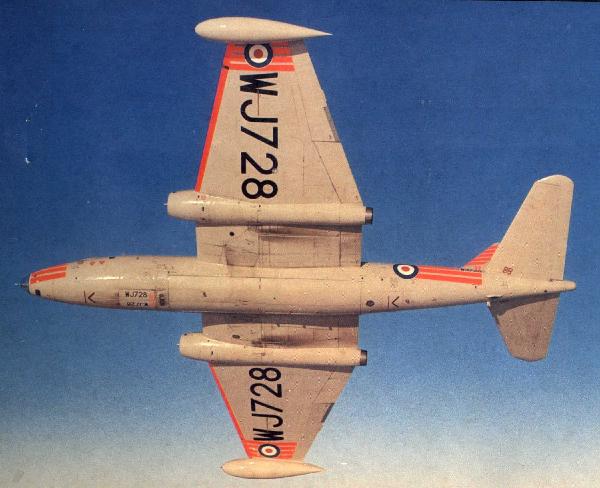
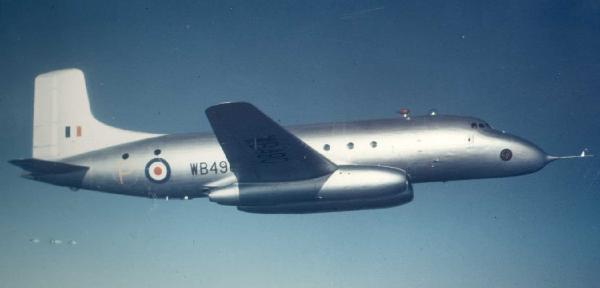
Most of the flying was in the UK but there were also a number of overseas flights—three weeks in Khartoum to run engine cooling and cabin cooling trials on a Varsity; two weeks of repetitive routing around the Sahara desert to try out the principle of radar picture matching; and GEE range checks to many points of the compass including Gibraltar and Copenhagen. Other specific trials involved the testing of new compasses and of new sextants, the application of H2S picture matching to assist in targeting and bomb runs, and to further the concept of navigation by following radar maps; the latter representing no doubt the crude forerunner of the navigation system of today’s cruise missile. But rather than listing by vague heading the sort of tasks that we faced, let me now zero in, as an example, on the details of just one very important specific task which was handed to me. It concerned the first British airborne Doppler equipment.
Does the name Christian Doppler mean anything to you? He was an Austrian, who in 1842 was the first to discover the effect of velocity on observed frequencies of light and sound. He tested his theory out on a train load of trumpeters. We sense the Doppler effect in sound all around us in any city, from police vehicles and ambulances; the sound is higher when it’s coming towards you because you’re hearing it at a higher frequency, and lower when it’s going away. Doppler will also appear frequently in astronomy manuals—redshift for galaxies moving away from us, blue towards.
Well, in the summer of 1953 the Doppler equipment developed by TRE was delivered for trials at Boscombe Down on behalf of the Ministry of Supply. It was called Green Satin—the Royal Navy’s version was Blue Silk. Green Satin was installed for the trials in a Canberra.
What was Green Satin? Simply a drift and groundspeed meter. Operational Requirement (OR) No 3015 specified for it in 1949 as follows: Groundspeed 100—700 Kts, accuracy < 0.2%; Drift from 20 P to 20 S, accuracy < 0.1 of a degree; Day or night, anywhere in the world; Over land or water, any time of year; Heights to 60,000 feet; Normal flight attitudes; All weathers.
The equipment sent out a signal to the ground ahead and received echoes back. The aerial was designed to seek out the maximum frequency shift between the signal out and the signal back, hence was aligned with track and could show the angle between its installed position and its track position—which of course equalled drift. The measure of that maximum frequency shift gave us groundspeed. Add compass heading to the drift and you had track; take the track plus the distance travelled into a simple computer (then called the Ground Position Indicator Mark 4) and you had northing and easting or along and across track, according to choice.
For those times, here was something of a completely new order of accuracy. I know that the navigators of the century’s end will smile at that statement when they think of their satellites and their Ground Position Systems measuring accuracy in feet, but this was hot stuff in the early 50s. And the problem to be faced in trials was—in measuring its accuracy, what do we measure against? What have we got that’s good enough to be our datum equipment?
We needed, firstly, an accurate fixing device and, secondly, an accurate heading. So what options were there? For fixing, three options: aerial photography (dismissed because of weather); ground radar fixing (dismissed because of decreasing accuracy with increasing distance from the radar); and fixing in the air from the then hyperbolic lattices—Gee or Decca. Gee was the familiar wartime fixing aid but did not lend itself to automatic and continuous readout. The concept of Decca was similar to that of Gee but with automatic readout. Of the two, Decca was the more accurate and, just as important, lent itself much more conveniently to photographic recording. Hence Decca Mark 6 was chosen as the most accurate position datum available; and the best accuracy was to be found along the right bisector between the master transmitter and one of the slaves. Two 100 nm runs were plotted, one over land and one over sea, as the optimum lengths in accuracy terms. The 50% error at the extremities of those 100 nm runs was calculated to be in the order of 60 yards. Ordnance Survey prepared for us special Decca lattice charts on a scale of 1 inch = 1 Kilometer. The displays of the Green Satin, the Ground Position Indicator, the compass (known as the G4B) and the Deccometers were all covered by a camera in a specially designed housing.
As to a heading datum, the G4B compass itself was hopeless. Even with the comparatively sophisticated Fourier analysis applied to compass swinging, the remaining uncertainties of both deviation and magnetic variation made the compass a crude heading datum. Therein lay the main problem with a device like Green Satin. To add its anticipated drift accuracy to that of the compass of those days was like adding champagne to ginger beer. Fortunately the problem had been foreseen a year or two previously by Farnborough; they had designed what they called an Azimuth Datum Instrument (ADI) for these very trials—a recording periscopic bearing plate, from which aircraft’s true heading would be determined by sun observations. The ADI was installed on the port side of the navigator’s hatch in the Canberra in such a position that the projected display of the instrument was directly in front of his head. The image was photographed by another camera. It’s interesting to recall that the installation invalidated the escape facility of the navigation hatch of the Canberra. The explosive bolts in the navigator’s seat were therefore removed. In addition there was reason to doubt the reliability of the dome of the ADI under stress of cabin pressure: the Canberra was therefore flown unpressurised and unheated for the bulk of the flying. Which, to say the least, was not comfortable.
After being satisfied that the installations were as perfect as they could be, that the Green Satin aerial was as accurately aligned with the fore and aft axis of the aircraft as possible, and that all necessary calculations were ready for analysis after flight, the flight trials began. There were 57 flights made in the Canberra (about a quarter by myself); some over land, some over sea; some low, down to 300 feet; most at medium levels, around 30,000 feet; a few high, up to 52,500 feet; at groundspeeds from 100kts to 550Kts; most flights, as I said, were flown unpressurised and unheated; all flights with no rear escape; the lowest air temperature experienced was -61 degrees C. The thick frost that formed over everything at height dripped nicely down on to the navigator as descent melted the frost.
On each run, photographic recordings of all instruments were made every 6 seconds. Readings of the films back on the ground were made to the nearest 0.1 degree for drift; 0.1 nm for distance; 0.01 of a Decca lane; 0.01 of a degree for sun’s azimuth.
Inevitably in a trial of this kind there were a number of special factors which were significant in varying degrees and had to be taken into account in one way or another. Alignment of the Green Satin aerial was, of course, vital. Any error in alignment would obviously translate into systematic drift error. Two alignment checks were made during the trials. Both were geometrical—not electronic. The alignment process involved the use of a theodolite and the projection of aircraft and aerial fore and aft axes on the ground. The accuracy of a single alignment observation was determined to be +/—0.02 of a degree in terms of 50% error.
Then there was the Azimuth Datum Instrument, the ADI, to align. The aircraft’s true heading determined by theodolite observations from a trigonometrical station was compared with apparent true heading deduced from the difference between calculated sun’s azimuth and sun’s relative bearing measured on the ADI.
Once in the air, there were a number of additional special factors. There was clearly going to be a great difference between performance over land and that over sea. For two reasons. Firstly, the question of signal strength. If the sea were smooth there would be insufficient return of signal to give any sensible results—in fact, it was found that below a 5Kt surface wind, unlocking would almost certainly occur at normal heights. Secondly, the sea surface most often is moving, as a result of both surface wind and tide. The combined effect is to produce a vector error in the Green Satin results. For instance, sea movement in a reciprocal direction to aircraft’s track would cause over-reading of groundspeed. Studies were made on all sea runs of the three vectors—tide and surface wind on the one hand and Green Satin error on the other—and broad correlation was noted.
Performance in turns depended on the rate of turn and the angle of bank. The higher in both cases, the more chance of unlocking. Similarly in pitch—when an aircraft with Green Satin climbs or dives, an error must be incurred in distance measurement. It must be said that it didn’t behave very well with Bomber Command’s World War II-type corkscrewing!
Next we have an unusual one—a factor not considered worth bothering about in any previous equipment. Green Satin’s distance gone calculation assumed the nautical mile (that is, a minute of latitude) to be 6080 feet in length and therefore gave correct distance information only at sea level at 48 degrees Latitude. At height at that Latitude it measured and registered a false ground distance: at 40,000 the error was 0.2%—2 miles in a 1,000. This type of error was allowed for in our calculations. If you significantly changed Latitude then a similar error was incurred: at the Equator the length of a minute of Latitude is 6045 feet. I stress that there was nothing new about these errors. They had always existed with such instruments as Air Speed Indicators and Air Position Indicators. The important point was that, for the first time, the value of these errors fell outside the accuracy limits of the new equipment.
On the ground, films were read every six seconds, averages taken over minute periods, and Green Satin error was a calculation of the difference between datum position—Decca fixing—and a position given by true heading from the ADI, Green Satin drift and Green Satin distance. Similar calculations were made in assessing the GPI4.
The subsequent document written for the Ministry of Supply submitted that the accidental errors of Green Satin over land in straight and level flight were less than +/—0.1% of distance flown and less than +/—0.1 of a degree in drift. Additional errors would be incurred due to aircraft height, change of Latitude, sea movement, misalignment of the aerial array and changes of aircraft attitude. However, these errors taken together were small compared with the directional error of the aircraft’s heading transmitted by the G4B compass into the Ground Position Indicator.
The message to the coming “V-Force” (the three medium bombers Valiant, Victor and Vulcan soon to enter Bomber Command) had to be:—here is a valuable and accurate tool to be used in your navigation/bombing systems, but the desperate need, as ever over so many decades, is for equally accurate heading. Whatever your heading system, compass swings will be of critical importance.
I have gone into that one trial in great detail in order that you may appreciate the measure of work that went into the preparation, the execution, the analysis and the reporting of results. Then—in 1953—we had no computers to assist us. We had projection equipment, of course, to portray on a clear wall the photography from the installed cameras beamed on the various dials; and we had a number of Frieden electro-mechanical calculators which were very large and very heavy desktop machines designed simply for number crunching. Most of the reports written then were classified—the Green Satin report was “Secret”. Many years later, in the 1990s, I paid the staff at Public Record Office, Kew, to let me have a copy of my own report.
Although my time at Boscombe Down was extremely busy—what with the flying, the analysis and the writing, and the promotion exams—the family and I did have opportunities to take leave: nowhere exotic overseas (couldn’t afford), but we spent the odd week in Bournemouth, just south of us, and in Torquay. I remember one morning getting up in our Bournemouth hotel and discovering that our little Singer car was missing. Enquiries to the police revealed that it had been stolen and used in a burglary and get away. A get away in the Singer! The car was found abandoned; the thieves were no doubt disgusted with its performance. It seemed to be all right afterwards. From one of our Bournemouth holidays, I was recalled early because the Green Satin trials were awaiting my presence. That’s the way it goes sometimes.
There were many Mess occasions—some with wives. I was very proud that Pat’s appearance at dinners and dances always drew admiring attention from other Officers. And the grand stag occasion each year was the A&AEE dinner with the Aircraft Constructors. It was at those events where the inevitable badinage between people like Sir George Edwards and Sir Fred Handley-Page took place. You see, those were the days of countless new jets appearing at the annual Farnborough airshows and the Mayor of Farnborough signalling “Bang On!” to sonic booms despite local protests; the days of test bed aircraft like the flying bedstead, the forerunner of the Harrier; the days of miniature Vulcans in formation with their bigger brother; and the days when the Victor would stagger round the Boscombe circuit on its first test run and Sir Fred would announce that it had flown higher, faster and further than any jet before it.
One weekend in November 1953 I was Duty Officer and had to be at a telephone on the Station. A call came through from Air Ministry on the Saturday morning. It was from Aircrew Postings. “Is Wg Cdr Clift about?” (Wg Cdr Clift had recently taken over as my boss from Paul Wood.) “Sorry” I replied “he’s off the Station.” “Then please give him a message—would he release Sqdn Ldr Furner at short notice to take up a post as an Exchange Officer in the USA, at Wright Patterson Air Force Base, Dayton Ohio.” Gulp. “Thank you—of course I’ll pass on the message—I’m sure there’ll be no problem.” And I hurried off to the map store to seek out Dayton. I was in a whirl. So many things to finish, so many things to start doing, so many arrangements to complete.
So—from (still) rationed UK we were off to the States! Another great adventure!
